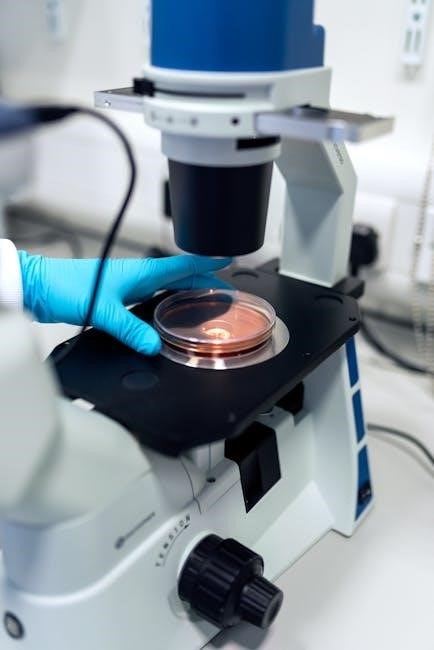PDF microbiology refers to the study and presentation of microbiological content in Portable Document Format, designed to organize and share scientific research effectively online.
What is Microbiology?
Microbiology is the scientific study of microorganisms, including bacteria, viruses, fungi, and protozoa. It explores their structure, function, and interactions with the environment and hosts. Microbiology is fundamental in understanding diseases, developing treatments, and improving public health. It also plays a crucial role in environmental science, agriculture, and biotechnology. Microbiologists investigate how microorganisms influence ecosystems, food production, and human health. The field is interdisciplinary, combining biology, chemistry, and genetics to address global challenges. From combating infectious diseases to enhancing food safety, microbiology’s applications are vast and essential for advancing scientific knowledge and solving real-world problems.
The Importance of Microbiology in PDF Format
Microbiology in PDF format is essential for organizing and sharing scientific research, educational materials, and practical guides. PDFs provide a structured, accessible way to present complex microbiological concepts, making them ideal for students, researchers, and professionals. They allow for the inclusion of detailed diagrams, charts, and images, enhancing understanding. PDF resources are widely used in academia for textbooks, lab manuals, and research papers, ensuring consistent and reliable information dissemination. Their portability and compatibility across devices make them a vital tool for learning and reference in microbiology, supporting education, research, and practical applications effectively.
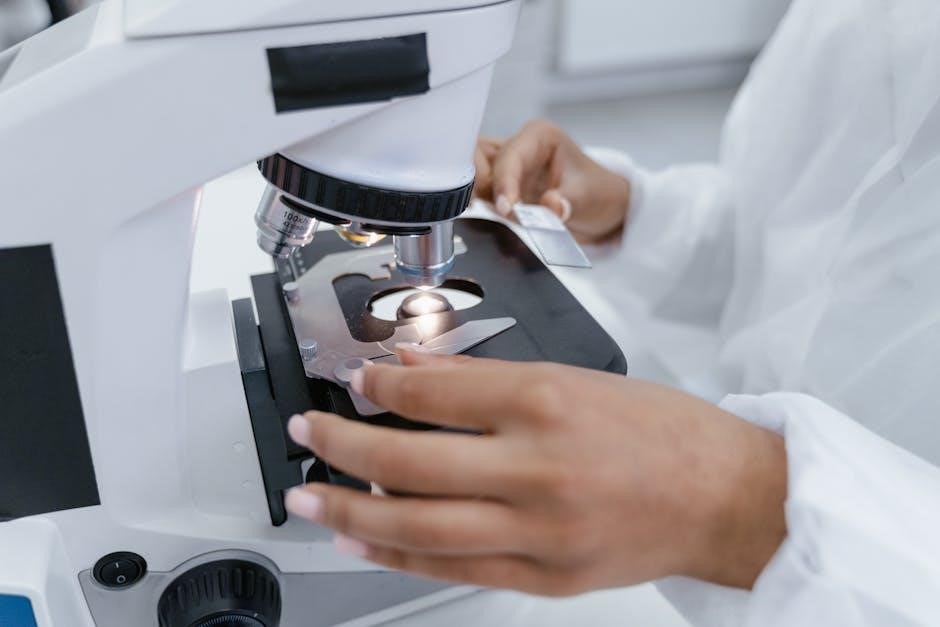
History of Microbiology
Microbiology’s history traces back to early discoveries of microorganisms, with pioneers like Antonie van Leeuwenhoek and Louis Pasteur shaping the field through groundbreaking research and advancements.
Key Milestones in the Development of Microbiology
The development of microbiology has been marked by groundbreaking discoveries that reshaped our understanding of microorganisms. One of the earliest milestones was Antonie van Leeuwenhoek’s pioneering use of microscopy to observe and describe microorganisms in the 17th century. Later, Louis Pasteur’s germ theory of disease revolutionized medical practices, while Robert Koch’s postulates established a framework for linking microbes to diseases. The invention of vaccines by Edward Jenner and others saved millions of lives. Modern advancements include the discovery of antibiotics like penicillin by Alexander Fleming and the development of molecular biology tools such as PCR and DNA sequencing. These milestones have collectively transformed microbiology into a cornerstone of scientific and medical progress.
Pioneers in the Field of Microbiology
The field of microbiology owes its foundation to several visionary scientists whose contributions paved the way for modern discoveries. Antonie van Leeuwenhoek, often called the “Father of Microbiology,” was the first to observe and describe microorganisms using his handmade microscopes. Louis Pasteur’s groundbreaking work on the germ theory of disease and vaccination laid the groundwork for medical microbiology. Robert Koch’s development of Koch’s postulates provided a scientific framework for linking microorganisms to diseases. Alexander Fleming’s discovery of penicillin revolutionized the treatment of bacterial infections. These pioneers, along with others like Edward Jenner and Élie Metchnikoff, have left an indelible mark on the field, inspiring generations of scientists to explore the microbial world and its applications in medicine, agriculture, and beyond.
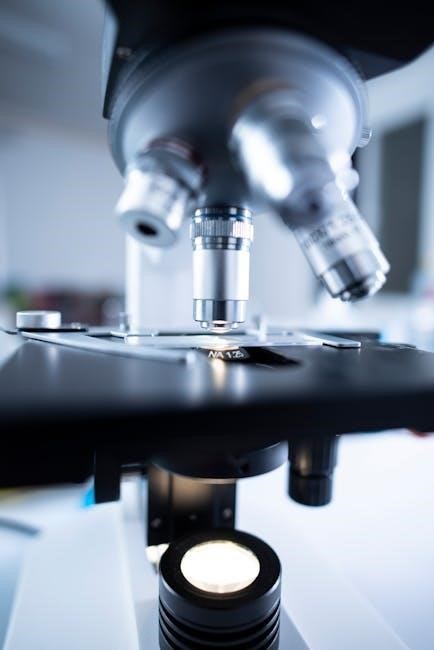
Branches of Microbiology
Microbiology encompasses various branches, including medical, environmental, industrial, and molecular microbiology, each focusing on different aspects of microbial study and applications in health, ecology, and biotechnology.
Medical Microbiology
Medical microbiology is a specialized field focused on the study of microorganisms and their impact on human health. It involves the diagnosis, prevention, and treatment of infectious diseases caused by bacteria, viruses, fungi, and parasites. This branch of microbiology is crucial for identifying pathogens, understanding their virulence, and developing antimicrobial therapies. By analyzing clinical samples, medical microbiologists play a key role in public health, enabling early detection of outbreaks and tracing the spread of diseases. The integration of molecular techniques, such as PCR and DNA sequencing, has enhanced diagnostic accuracy and sped up the identification of pathogens. Medical microbiology also informs the development of vaccines and antimicrobial agents, making it a cornerstone of modern healthcare and a vital component of PDF microbiology resources.
Environmental Microbiology
Environmental microbiology explores the roles and interactions of microorganisms in natural ecosystems, including soil, water, and air. It focuses on understanding how microbes contribute to ecological processes such as decomposition, nutrient cycling, and bioremediation. This field also examines the impact of environmental changes, such as pollution and climate change, on microbial communities. Techniques like PCR and DNA sequencing are used to identify and study these organisms in their natural habitats. Environmental microbiology is crucial for developing strategies to mitigate environmental damage and promote sustainable practices. PDF resources on this topic often include case studies and research findings, highlighting the importance of microbial ecology in maintaining global health and biodiversity. This knowledge is essential for addressing contemporary environmental challenges effectively.
Industrial Microbiology
Industrial microbiology focuses on the use of microorganisms to produce goods and services on a large scale. It involves fermentation processes to create products like antibiotics, vaccines, enzymes, and biofuels. This field leverages microbial metabolism to develop biotechnological solutions, enhancing industrial efficiency and sustainability. Advances in genetic engineering have enabled the creation of microbes tailored for specific industrial applications. Industrial microbiology also explores bioremediation, using microbes to clean pollutants from environments. PDF resources on this topic often detail fermentation techniques, bioprocess optimization, and the economic impact of microbial technologies. By integrating microbiology with engineering, this discipline drives innovation in manufacturing, healthcare, and environmental conservation, showcasing the versatility of microbes in industrial settings.
Molecular Microbiology
Molecular microbiology is a specialized field that explores the genetic and molecular mechanisms underlying microbial processes. It focuses on understanding how microorganisms interact with their environments, replicate, and respond to stimuli at the molecular level. Techniques such as PCR, DNA sequencing, and gene editing are central to this discipline. Molecular microbiology has revolutionized the study of microbial pathogens, enabling researchers to identify virulence factors and develop targeted therapies. It also plays a critical role in advancing biotechnology, such as gene engineering and vaccine development. PDF resources on this topic often provide detailed insights into microbial genomics, proteomics, and the application of molecular tools in diagnosing and treating infectious diseases. This field bridges basic science with practical applications, driving innovation in healthcare and biotechnology.
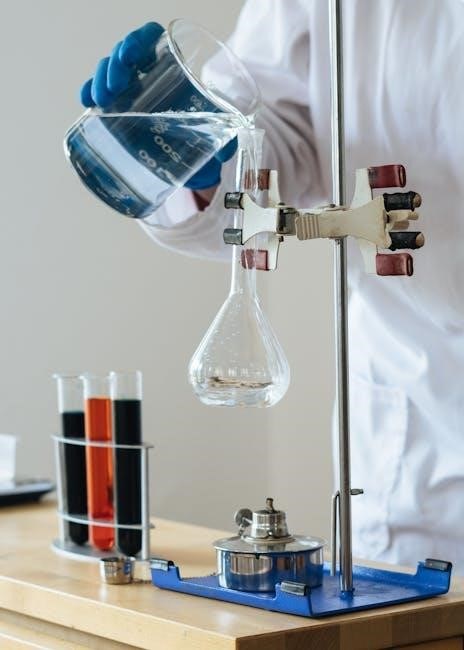
Microbiological Techniques
Microbiological techniques encompass traditional methods like culturing and staining, as well as modern tools such as PCR and DNA sequencing. These methods are essential for identifying, analyzing, and understanding microbial interactions, playing a crucial role in research and diagnostics.
Traditional Microbiological Methods
Traditional microbiological methods include techniques such as culturing on agar plates, microscopy, and staining processes. These methods are foundational for isolating, identifying, and characterizing microorganisms. Culturing involves growing microbes in controlled environments to study their growth patterns and metabolic activities. Staining techniques, like Gram staining, help differentiate bacterial species based on cell wall properties. Microscopy is essential for observing microbial morphology and motility. These methods are widely used in education and research, providing a practical understanding of microbial behavior. They are also cost-effective and remain integral to basic microbiological investigations, complementing advanced techniques in diagnostics and research.
Modern Microbiological Techniques
Modern microbiological techniques leverage advanced technologies to enhance precision, speed, and scalability in microbial analysis. PCR (Polymerase Chain Reaction) and DNA sequencing revolutionized the field by enabling rapid identification and genetic characterization of microorganisms. Automated culture systems and high-throughput screening methods optimize microbial cultivation and testing. Advanced microscopy, such as fluorescence and electron microscopy, provides detailed insights into microbial structure and function. Additionally, bioinformatics tools analyze large datasets from metagenomics and proteomics studies, offering comprehensive insights into microbial communities. These techniques are essential in research, diagnostics, and industrial applications, driving innovation in microbiology and addressing complex challenges in healthcare, environment, and biotechnology.
Role of Microscopy in Microbiology
Microscopy is a cornerstone of microbiology, enabling the visualization and study of microorganisms that are otherwise invisible to the naked eye. Light microscopy remains a fundamental tool for observing microbial morphology, while advanced techniques like fluorescence and electron microscopy provide higher resolution and detailed insights. These methods are essential for identifying microbial structures, diagnosing infections, and understanding cellular interactions. Modern advancements, such as digital imaging and automated microscopy systems, have enhanced the efficiency and accuracy of microbial analysis. Microscopy plays a critical role in both research and clinical settings, aiding in the identification of pathogens, monitoring microbial growth, and studying microbial behavior in various environments.
PCR and DNA Sequencing in Microbiology
PCR (Polymerase Chain Reaction) and DNA sequencing are revolutionary techniques in microbiology, enabling the amplification and analysis of microbial DNA. PCR rapidly replicates specific DNA sequences, making it essential for detecting pathogens in clinical samples. DNA sequencing provides detailed genetic information, allowing for precise identification of microorganisms. These methods are critical for diagnosing infections, tracing disease outbreaks, and understanding microbial evolution. In research, they facilitate the study of microbial diversity and the development of targeted therapies. The integration of PCR and sequencing has transformed microbiology, enhancing our ability to combat infectious diseases and advance public health. These tools are indispensable in both clinical and laboratory settings for accurate and efficient microbial analysis.
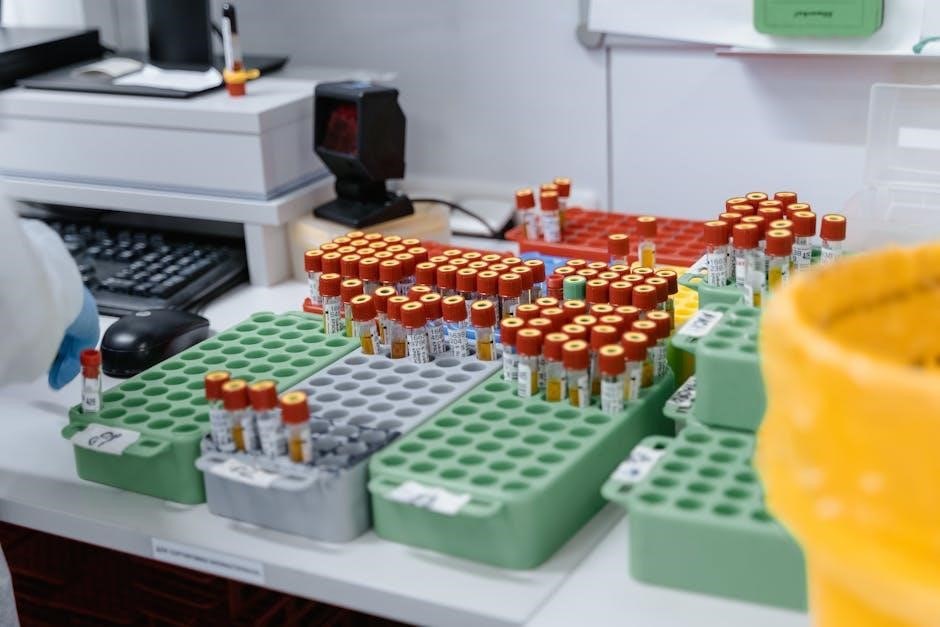
Applications of Microbiology
Microbiology applies to food safety, environmental monitoring, and industrial processes, enhancing public health and ecological sustainability through microbial research and innovation in disease prevention and biotechnology.
Medical Applications of Microbiology
Medical microbiology plays a crucial role in understanding pathogens, diagnosing infections, and developing treatments. It aids in identifying bacteria, viruses, and parasites, enabling accurate disease diagnosis. Microbiological research has led to the discovery of antibiotics and vaccines, saving millions of lives. In hospitals, microbiology labs analyze patient samples to determine appropriate therapies, reducing antibiotic resistance. Public health initiatives rely on microbiology to track infectious diseases, like RSV in children, and implement prevention strategies. Additionally, microbiology contributes to food safety by identifying harmful pathogens, ensuring safe consumption. Its applications extend to understanding microbial interactions, which inform treatments for complex conditions and improve overall patient care, making it indispensable in modern medicine.
Agricultural Applications of Microbiology
Agricultural microbiology harnesses the power of microorganisms to enhance crop production, soil health, and pest control. Microbes like bacteria and fungi improve soil fertility by fixing nitrogen and solubilizing phosphorus, reducing the need for chemical fertilizers. They also promote plant growth through symbiotic relationships, such as mycorrhizal associations. Microbiological techniques are used to develop biopesticides, replacing harmful chemicals and protecting crops from pathogens and pests. Additionally, microbiology contributes to livestock health by improving feed quality and preventing diseases. These applications not only boost agricultural productivity but also support sustainable farming practices, ensuring food security while minimizing environmental impact. The study of agricultural microbiology is essential for advancing eco-friendly and efficient farming systems globally.
Environmental Applications of Microbiology
Microbiology plays a vital role in addressing environmental challenges through bioremediation, waste management, and pollution control. Microorganisms are used to degrade pollutants, such as oil spills and industrial waste, restoring ecosystems. In wastewater treatment, microbes break down organic matter, ensuring safer water discharge. Environmental microbiology also involves monitoring and mitigating the impact of harmful pathogens in water and soil. Additionally, microbes contribute to sustainable practices by reducing reliance on chemical fertilizers and pesticides, promoting eco-friendly agriculture. These applications highlight the importance of microbiology in preserving biodiversity, combating climate change, and maintaining environmental health for future generations.
Food Safety and Microbiology
Microbiology is essential for ensuring food safety by detecting and controlling pathogens that cause foodborne illnesses. Techniques like microbial testing and PCR help identify contaminants such as Salmonella, E. coli, and Listeria in food products. Understanding microbial growth patterns allows for the development of preservation methods, extending shelf life while maintaining safety. Food safety protocols also involve preventing cross-contamination and spoilage through proper storage and handling practices. Regulatory agencies rely on microbiological data to set standards for food production and processing. By addressing these challenges, microbiology plays a critical role in protecting public health and ensuring the quality of the food supply chain.
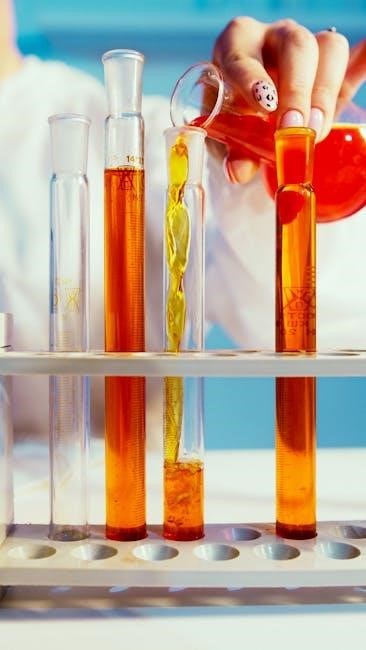
Microbial Ecology
Microbial ecology studies the interactions between microorganisms and their environments, focusing on community dynamics, symbiotic relationships, and the impact of environmental factors on microbial populations and ecosystems.
Microbial Communities and Their Roles
Microbial communities are diverse groups of microorganisms that interact within specific environments, playing crucial roles in ecosystems. These communities contribute to decomposition, nutrient cycling, and the degradation of organic matter. They are essential for maintaining soil fertility, water quality, and plant health. In human health, microbial communities in the gut influence digestion, immunity, and overall well-being. Dysbiosis, or imbalances in these communities, can lead to diseases. Understanding microbial interactions is vital for developing strategies to enhance agricultural productivity, combat infections, and address environmental challenges. Research, such as studies on RSV infections in children, highlights the importance of microbial dynamics in health and disease prevention. These communities are indispensable in sustaining life and balancing ecosystems at every level.
Interaction Between Microbes and Their Environment
Microbes interact with their environment through complex mechanisms, influencing and being influenced by their surroundings. These interactions are crucial for nutrient cycling, decomposition, and energy flow in ecosystems. Microbes thrive in diverse environments, from soil and water to the human gut, adapting through symbiotic relationships, mutualism, and competition. Environmental factors like pH, temperature, and nutrient availability shape microbial behavior and community composition. In return, microbes modify their environments by producing enzymes, hormones, and metabolic byproducts. For example, nitrogen-fixing bacteria improve soil fertility, while pathogenic microbes alter host environments to facilitate infection. Understanding these interactions is vital for applications in environmental microbiology, such as bioremediation, agriculture, and human health, offering insights into how microbes shape and are shaped by their ecological niches.
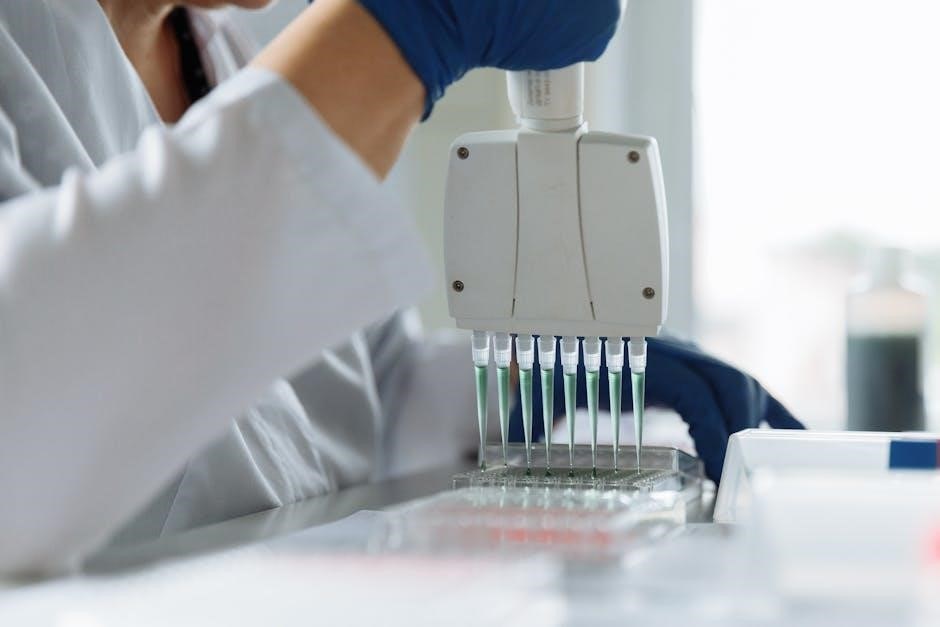
Microbiology and Public Health
Microbiology plays a vital role in public health by addressing disease prevention, sanitation, and the control of infectious agents, ensuring safer communities through applied microbiological research and practices.
Epidemiology and Microbiology
Epidemiology, the study of disease distribution and determinants, relies heavily on microbiology to identify and analyze pathogens. Microbiological techniques, such as PCR and DNA sequencing, enable precise identification of infectious agents, aiding in outbreak investigations. By understanding microbial transmission dynamics, public health officials can implement targeted interventions, such as vaccination programs or sanitation measures. The integration of microbiology in epidemiology enhances the ability to track disease spread, develop preventive strategies, and evaluate the effectiveness of control measures. This collaborative approach is essential for reducing the burden of infectious diseases and improving global health outcomes.
Prevention and Control of Infectious Diseases
Microbiology plays a crucial role in the prevention and control of infectious diseases by identifying pathogens and understanding their transmission. Sanitation, vaccination, and antibiotic therapies are key strategies derived from microbiological research. Public health measures, such as proper food safety protocols and water treatment, reduce the spread of pathogens. Microbiological techniques like PCR and DNA sequencing enable rapid identification of disease-causing agents, aiding in timely interventions. Education and awareness campaigns also empower communities to adopt preventive practices. By integrating microbiological knowledge, healthcare systems can effectively mitigate outbreaks and protect populations from infectious diseases, ultimately saving lives and improving global health outcomes.
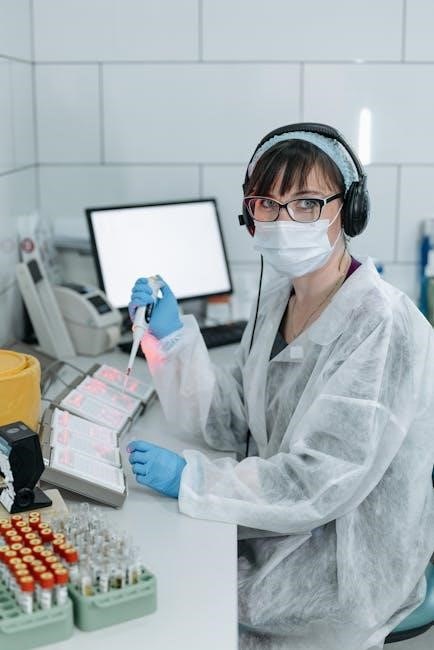
Microbiology in Research and Development
Microbiology drives advancements in research and development through innovations in medical treatments, agricultural practices, and biotechnological solutions, utilizing tools like PCR and DNA sequencing for precise analysis.
Current Research Trends in Microbiology
Current research in microbiology focuses on advancing our understanding of microbial genomes, antimicrobial resistance, and the development of novel therapeutic agents.
Modern techniques such as PCR, DNA sequencing, and metagenomics are revolutionizing the field, enabling precise identification and analysis of microbial communities.
Studies on the human microbiome and its role in health and disease are gaining traction, while CRISPR technology offers promising avenues for gene editing in microbes.
Additionally, research into environmental microbiology explores microbial contributions to biodegradation and climate change mitigation.
The integration of artificial intelligence and machine learning in microbiological studies is also emerging, enhancing data analysis and predictive modeling.
These advancements underscore the dynamic and interdisciplinary nature of microbiology in addressing global challenges.
The Role of Microbiology in Biotechnology
Microbiology plays a pivotal role in biotechnology by providing the foundational knowledge and tools to harness microbial potential for industrial and medical applications.
Techniques such as PCR, DNA sequencing, and CRISPR gene editing have enabled the engineering of microbes for producing enzymes, biofuels, and pharmaceuticals.
Microorganisms are used in fermentation processes to manufacture antibiotics, vaccines, and nutritional supplements, highlighting their economic importance.
Furthermore, microbial biotechnology addresses environmental challenges through bioremediation, where microbes degrade pollutants, and biomass conversion, which supports sustainable energy production.
The development of probiotics and biofertilizers exemplifies how microbiology contributes to agriculture and human health;
PDF resources detailing these advancements provide comprehensive guides for researchers and students, ensuring the field remains accessible and innovative.
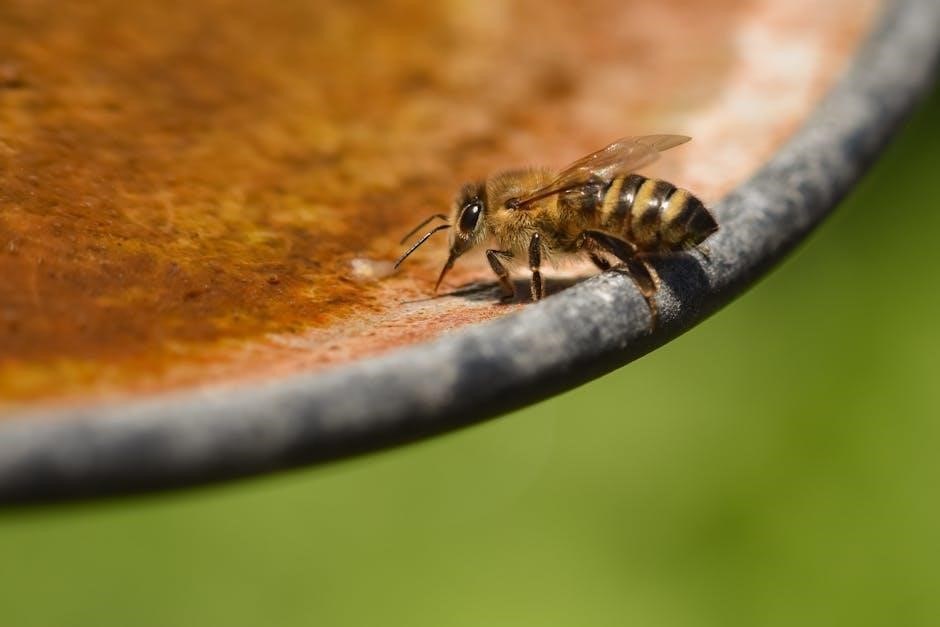
Microbiology Education and Resources
Key textbooks, online courses, and PDF guides provide comprehensive learning materials, enabling students and professionals to explore microbiology concepts, techniques, and advancements in an organized, accessible format.
Key Textbooks and PDF Resources for Microbiology
Essential textbooks and PDF resources are vital for microbiology education, offering in-depth insights into microbial biology, techniques, and applications. Popular textbooks include Microbiology: An Evolving Science by Michele Swanson and Microbiology: A Laboratory Manual by James C. Hill. PDF resources, such as lecture notes and research papers, are widely available online, providing accessible learning materials. Platforms like university repositories and scientific databases offer downloadable PDFs, enabling students to explore topics like molecular microbiology and medical microbiology. These resources are regularly updated, ensuring students stay informed about the latest discoveries and methodologies in the field.
Online Courses and Tutorials in Microbiology
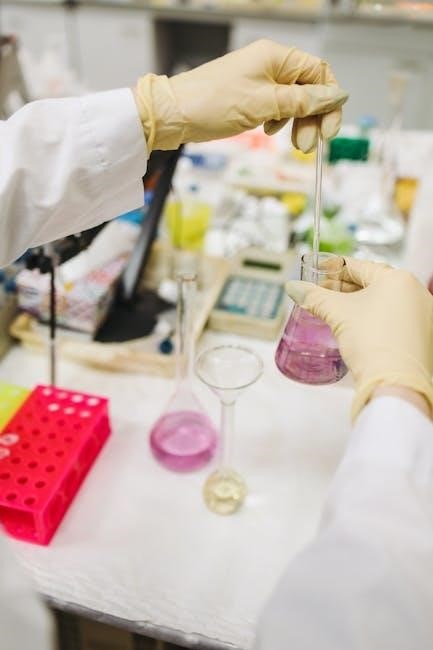
Future of Microbiology
Emerging trends in microbiology include advancements in AI, gene editing, and microbiome research, promising breakthroughs in disease prevention and environmental sustainability, as highlighted in recent PDF publications.
Emerging Trends in Microbiology
Recent advancements in microbiology highlight the integration of cutting-edge technologies like CRISPR gene editing, artificial intelligence, and metagenomics. These tools enable deeper insights into microbial genomes and ecosystems, revolutionizing disease diagnosis and treatment. The rise of microbiome research has uncovered its role in human health, agriculture, and environmental sustainability. PDF resources detail how these trends are reshaping medical and industrial applications, offering accessible knowledge to researchers and students. The future of microbiology lies in harnessing these innovations to address global challenges, such as antibiotic resistance and climate change, ensuring sustainable solutions for generations to come.
Challenges and Opportunities in Modern Microbiology
Modern microbiology faces challenges such as antibiotic resistance, emerging pathogens, and the need for sustainable solutions. However, these challenges also present opportunities for innovation. Advances in genetic engineering and microbiome research offer potential breakthroughs in medicine and agriculture. Additionally, the digital transformation of scientific publishing, particularly through PDF resources, enhances knowledge dissemination and collaboration. This accessibility fosters global research networks, driving progress in understanding and addressing microbial threats. The integration of technology and microbiology not only tackles current issues but also opens new avenues for biotechnological applications, ensuring a promising future for the field. By leveraging these opportunities, microbiologists can overcome challenges and contribute to societal well-being.
